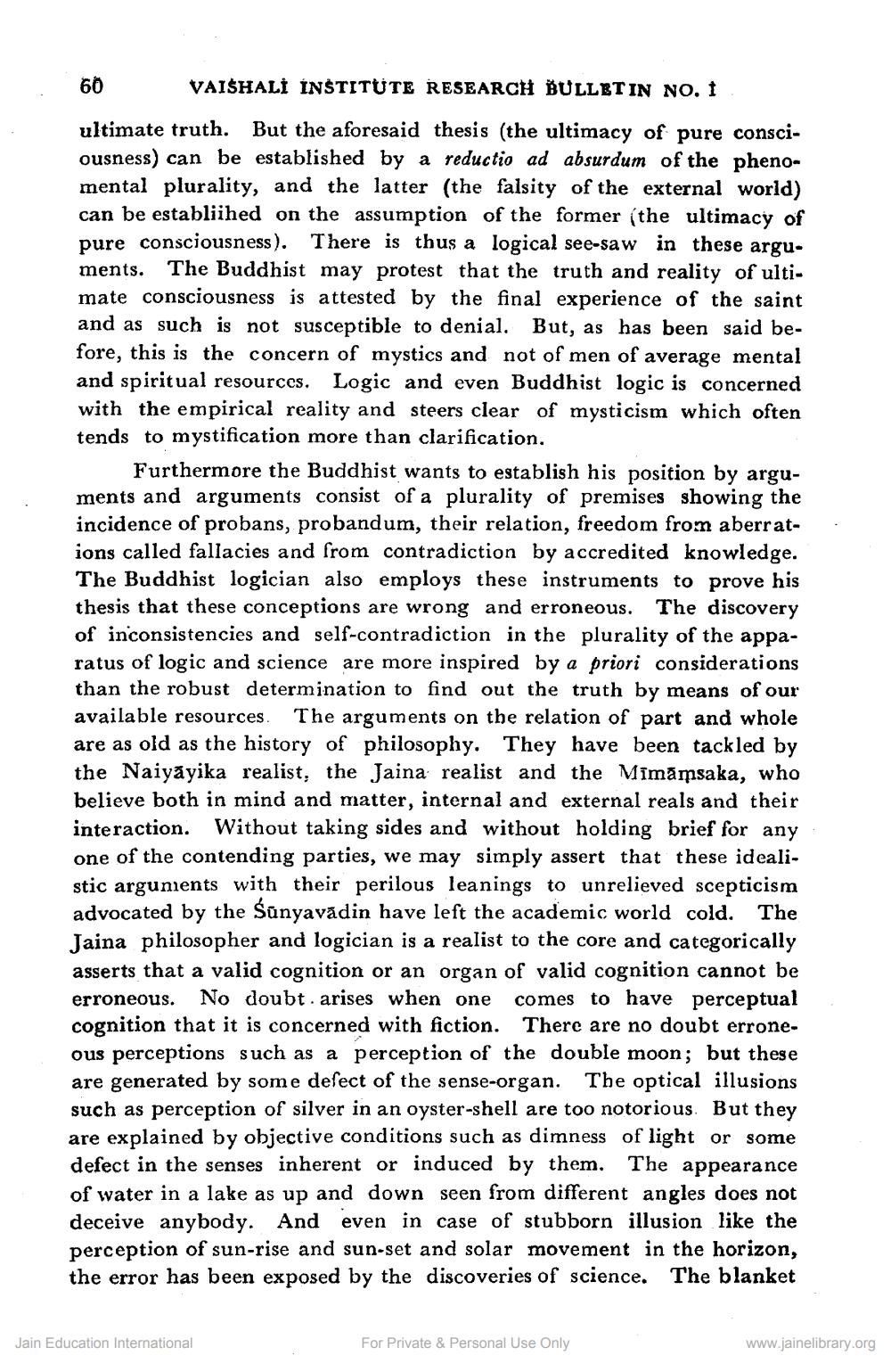________________
60
VAISHALI INSTITUTE RESEARCH BULLETIN NO. 1
ultimate truth. But the aforesaid thesis the ultimacy of pure consciousness) can be established by a reductio ad absurdum of the phenomental plurality, and the latter (the falsity of the external world) can be establiihed on the assumption of the former (the ultimacy of pure consciousness ). There is thus a logical see-saw in these argu. ments. The Buddhist may protest that the truth and reality of ultimate consciousness is attested by the final experience of the saint and as such is not susceptible to denial. But, as has been said before, this is the concern of mystics and not of men of average mental and spiritual resources. Logic and even Buddhist logic is concerned with the empirical reality and steers clear of mysticism which often tends to mystification more than clarification.
Furthermore the Buddhist wants to establish his position by arguments and arguments consist of a plurality of premises showing the incidence of probans, probandum, their relation, freedom from aberrations called fallacies and from contradiction by accredited knowledge. The Buddhist logician also employs these instruments to prove his thesis that these conceptions are wrong and erroneous. The discovery of inconsistencies and self-contradiction in the plurality of the apparatus of logic and science are more inspired by a priori considerations than the robust determination to find out the truth by means of our available resources. The arguments on the relation of part and whole are as old as the history of philosophy. They have been tackled by the Naiyāyika realist, the Jaina realist and the Mimāmsaka, who believe both in mind and matter, internal and external reals and their interaction. Without taking sides and without holding brief for any one of the contending parties, we may simply assert that these idealistic argunients with their perilous leanings to unrelieved scepticism advocated by the Sūnyavādin have left the academic world cold. The Jaina philosopher and logician is a realist to the core and categorically asserts that a valid cognition or an organ of valid cognition cannot be erroneous. No doubt arises when one comes to have perceptual cognition that it is concerned with fiction. There are no doubt erroneous perceptions such as a perception of the double moon; but these are generated by some defect of the sense-organ. The optical illusions such as perception of silver in an oyster-shell are too notorious. But they are explained by objective conditions such as dimness of light or some defect in the senses inherent or induced by them. The appearance of water in a lake as up and down seen from different angles does not deceive anybody. And even in case of stubborn illusion like the perception of sun-rise and sun-set and solar movement in the horizon, the error has been exposed by the discoveries of science. The blanket
Jain Education International
For Private & Personal Use Only
www.jainelibrary.org




